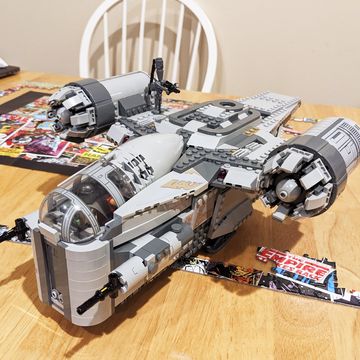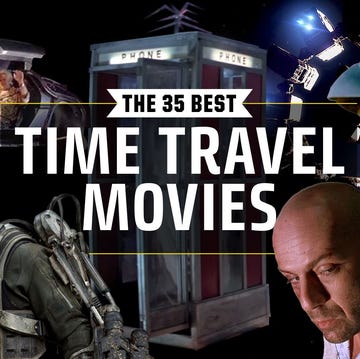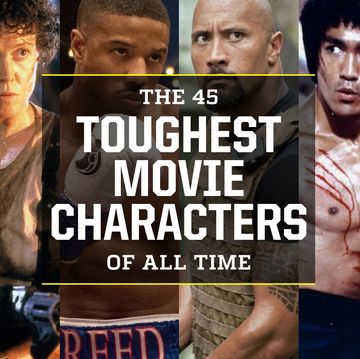Cory Arcangel, a Brooklyn, New York–based artist, was watching a video from 1985 on YouTube (below) in which artist Andy Warhol generates a "painting" of Blondie lead singer Debbie Harry on an early Amiga computer, when he wondered, what became of these files? After a quick message to the Andrew Warhol Museum in Pittsburgh, he found out: Sitting in the archives, yet to be catalogued, was a series of 3.5-inch floppy disks.
The Computer Club at Carnegie Mellon University in Pittsburgh set about retrieving and saving Warhol's mid-'80s digital experiments. When they succeeded this spring, headlines heralded the achievement for reviving unseen works of one of the 20th century's best-known artists.
But it also brings up a good question: How much more irreplaceable information, whether historical treasures or family moments, resides on obsolete formats, decaying in archives and closets? And even if the information is salvageable, what happens if we've already lost the software or hardware needed to read it?
Striking Digital Gold
Amiga was once a top-of-the-line machine—a successor to the Commodore 64. But as the PC wars raged, it lost out to IBM, and to a lesser extent, Apple. Amiga is now a curio, with the last model rolling out in 1992. The one that Warhol used was a preproduction model. The CMU computer club didn't know what the software he used might be, what format the files would be in, or if there would be anything at all on the disks.
"Disks themselves are, of course, fragile and suffer from inevitable 'bit rot' due to magnetic degradation," says Michael Dille, a Computer Club member who worked on the project last year. "In our case, it was a simple race against time to get these archived before they degraded any further."
The team researched the hardware and software to do a forensic report on how Warhol might have gone about creating the works. They also had to worry about the physical condition of the disks—whether they were going to be readable three decades later, or if the process of extracting the information might damage the disks. Even 30 years later, they found the disks were still readable and contained few errors. The real challenge came with making sense of the software. The drawing software required a ROM boot available only with the prerelease version of the Amiga in Warhol's possession, so the team had to write a few software solutions to extract them. When the researchers ran the data through the emulator, they saw a digitized version of Warhol's signature—a sign that they had been successful.
They still had to extract the image files. We take for granted the relative ubiquity of JPEG and PNG, but image files haven't always been so standardized. Some Warhol images existed in formats virtually unrecognized by members of the group. However, one club member was able to look at the files and realize it was similar to a more widely used format, and extract the raw image into a bitmap file.
Today it can be too easy to forget that in an era before the Internet, software existed exclusively on disks, as did the images and documents contained therein. This means that many works of the past few decades are hidden away on floppy disks, waiting for rediscovery. But time is running out.
"No doubt there's quite a lot of cool stuff forgotten and yet undiscovered in basements, attics, and museum archives," Dille says.
Magnetic formats are beginning to decay, and early generations of computer disks and videotape are wearing away as you read this. And as we're just beginning to understand, optical media such as the first generation of compact discs are beginning to degrade, which begs the question of whether or not DVDs are far behind. In other words: All formats are decaying. And in the process, so are memories and archives and first-hand accounts. As the clock winds down on some of the formats, it's important to archive them before they're lost forever.
Hardware Nowhere to Be Found
Just eight years have passed since A History of Violence became the last Hollywood picture to be distributed on VHS. Yet tapes of all kinds—not just VHS—are in danger of disappearing into static.
Obsolescence can strike video in two ways. The first is simple decay—a process that can take 10 to 25 years. The second is not a result of entropy but of cultural progress: The hardware with which to view these videos becomes obsolete, then rare, then almost impossible to find.
For instance: In 1965, the Philips Company, then doing business in the United States as Norelco, loaned Andy Warhol an early video camera. That footage still exists, but most of it cannot be played back. The reel-to-reel Norelco EL-3400 camera and Videotape Recorder (VTR) were based on vacuum-tube technology. It was the only VTR format to use vacuum tubes only, according to Richard Diehl, an expert on home-recording formats who goes by the name The LabGuy online. To play back the tapes, special modifications had to be made to televisions, with a wire slipped over an amplifier tube inside the television.
"There were not a lot of EL-3400s imported by the U.S., so finding a complete operational unit is highly unlikely," Diehl says. "In the 20 years I've devoted to the hunt, I've only seen one in the U.S."
It's not impossible to reverse-engineer the hardware if you've got the medium—Cinerama and other formats have been revived this way. "If those tapes exist . . . somebody should rebuild a Norelco player and transfer them to a medium in which they can be preserved," says Wheeler Winston Dixon, professor of film studies at the University of Nebraska–Lincoln.
Until then, there is one place to find some of the Warhol Norelco footage: in Outer and Inner Space, it can be seen on a monitor within the film, and Warhol Factory regular Edie Sedgwick interacts with herself on-screen through side-by-side images. In one of the images, Sedgwick smokes a cigarette while standing to the right of a video monitor that displays the footage. "The interplay between herself on the monitor and herself in reality sounds simple, but it's absolutely brilliant," Dixon says. He saw the film in the 1960s during his time with the Warhol Factory.
Fading Film
Dixon still remembers attending a 1984 London rooftop screening of the 1949 film Marry Me!. That screening used one of the original prints, and because the film was released prior to 1950, it was shot on cellulose nitrate—a medium Dixon calls "eagerly flammable."
In those days, the reels had to be brought up to the roof one by one. Fire extinguishers had to be on hand near the projector. And once a reel started, it had to keep going."You could start the film, but you couldn't stop it, because otherwise it might burst into flames," Dixon says.
Cellulose nitrate films didn't all burst into flames. But they're delicate in other ways. Sunlight degrades them. Moisture degrades them. Only 14 percent of films from the silent era survive intact in their original format. About 70 percent of all films from 1912 to 1930 are believed to be lost forever.
Yet Dixon is even more concerned about another film technology careening toward obsolescence: 16-mm and 35-mm film, typically used in TV and movies, respectively. Birns and Sawyer, the company that supplied much of the 16-mm equipment to camera crews, recently liquidated their stock. "They just got rid of everything because no one was renting it," Dixon says. And 35-mm film seems on the verge of obsolescence as well. It seems the national trend is moving away from film and toward strictly digital theaters, according to The Wall Street Journal.
For those that have 16-mm prints in their attic, the Smithsonian Institution recommends they turn to the University of Illinois at Urbana-Champaign's Audiovisual Self-Assessment Program, which can guide users through appraising their collection and connecting them to resources for archiving. They also recommend the National Film Preservation Foundation.
Get It on Tape
It was the 1980s, and Mona Jimenez was working at the Visual Studies Workshop, trying to play back a half-inch open-reel tape. The tape had fallen victim to hydrolysis, making the tape gummy. Hydrolysis, known in the video community as sticky-shed syndrome, occurs when water causes the tape adhesives to deteriorate, breaking down the magnetic media inside. When played, the picture was snowy and distorted.
"That was where I first realized that older forms of video could be problematic in terms of playback," she says. And this was the genesis of what's become Jimenez's life work. Now an associates arts professor in film studies and associate director of the Moving Image Archiving & Preservation (MIAP) program at New York University, she's one of the world's foremost video archivists, dedicated to preserving the works of video artists. MIAP is one of the few university programs in the nation devoted to video preservation.
Video presented a new opportunity for cheaper film production, starting in the 1960s. There was no need to send it to a lab for processing. The images were recorded on a magnetic medium and could be played back later. This made video as an accessible and affordable format for artists, who began to create a wide range of works that wouldn't have been possible with conventional film. Korean artist Nam June Paik used video to enable installations like TV Clock, with 24 monitors, each displaying a different symbol.
But not all video media was created equal. Some formats rot more quickly than others; some have fallen prey to machine failure. While a VHS cassette has a maximum 40-year life span, the Hi8 home-camcorder formats have a life span of 10 to 20 years. And the players can often have as many problems as the tapes.
"If you have a format like Hi8 or Video8, you really don't find decks for those very fragile video formats. because they weren't really fixed," Jimenez says. "With Hi8, if there was some kind of problem, the whole board would often be replaced. They just weren't repaired as much, so there don't tend to be as many machines around."
Media Burn, a Chicago-based media -arts center, has more than 6,000 tapes in its archives, and has been hard at work converting them to digital media before the tapes degrade completely. In one acquisition, they came into possession of a trove of half-inch tapes, including early Second City performances featuring John Belushi and Harold Ramis. Their facility wasn't equipped to handle this media due to their age, though in this case a specialist was able to transfer them to digital formats.
Still, given the relatively short life span of video, Media Burn's executive director, Sara Chapman, worries about what might be lost.
"The period of videotape is over," she says. "It was maybe from the late 1960s to the late 2000s. Eventually all those tapes will stop working completely. The earlier tapes are already past their life span, and they really require extraordinary measures to revive."
Chapman says that the biggest worry isn't conversion, as more recent formats can be widely played. Rather, it's getting the word out that video needs to be converted now before it's lost forever.
"No preservationists think that videotapes can be saved in the long term," she said. "It's just strictly a temporary medium . . . It was never an archival medium. It was never designed with that intent."
As any Doctor Who fan can attest, video has been the primary medium to record and broadcast the television series. And as any Doctor Who fan can also attest, episodes of those series can be taped over, lost, or degraded. A total of 97 episodes are still missing after the BBC taped over or otherwise lost the originals. A total of 50 episodes have been recovered after tapes or film were discovered in other countries.
Why did this happen? The BBC never saw the value in archiving the episodes.
Like the silent-film era, much of the early television era is gone, either because it was never recorded or because the video was lost or never archived. Jimenez wants there to be a national television and video registry, and to see the format afforded the same esteem as film.
"I think that there are many reasons why we would want to maintain television and video history," she says. "How do producers of the future access footage that was shot on television or video?"
Today's Tech Will Become Yesterday's
The obsolescence of cassettes or machines that will play them is just one part of the problem. Jimenez also worries about digital converters. Once very expensive, they've come down in price to a few hundred dollars or less for professional equipment. But they, too, will become obsolete. Even digital formats like the DVD face degradation and format obsolescence as the run to digital moves toward on-board hard drives.
As The Atlantic recently reported, the shelf life of a CD isn't currently known, but burned CDs from the '90s are already becoming unplayable not by scratches but by the introduction of oxygen into the sandwiched disc layers.
The Library of Congress subjected identical copies of Paul Winter's Earthbeat to extreme conditions and had wildly different results: One of them turned entirely transparent, while the other seemed relatively intact. But many early CDs (the format was first released in 1982) are already starting to go, meaning the format could have only a 30-year shelf life if professionally produced, and less than that if burned, because of the organic dyes used in the process.
Who Owns the Rights?
Here's one more preservation problem: You can never escape copyright issues. Even when it comes to obsolete hardware, software, or programming, companies still hold the copyrights to the product being stored. While some companies have released older software into the public domain, others guard the copyright even on outdated or no-longer-supported software.
This is a problem retro-computing enthusiasts like Dille and the Computer Club run into all the time. Older file formats for older versions of software compatible only with older operating systems aren't always compatible with the newest offerings from the companies, but the companies are hesitant to allow their distribution.
"Fortunately, there exist many vibrant communities of historical enthusiasts online [preserving original-software versions], but they are often doing so technically illegally, and I frequently hear reports of the latest 'retro software' site being shut down due to a copyright-violation notice," Dille says.
What to Do
Sitting in your basement, in your attic, shelved away in the closet, your family memories, old concerts, art projects, and more are decaying. The shelf life of formats varies, but the end result doesn't: The media will eventually be unreadable.
It's a race against time, in effect, and there's plenty to preserve out there. Take, for example, Philadelphia's Marion Stokes. When she died, her family found more than 40,000 videocassettes in her home. Many of them were old newscasts and other recordings of her era, going far back to her time as a news producer at the dawn of video, including the Philadelphia public-affairs show Input.
Had her family not turned the videocassettes over to the Internet Archive, the rare footage might not have been preserved. How many more videos or other works on magnetic media might be lost if they're not preserved in time?
"They're deteriorating quickly, and we race to transfer them to digital before they're lost," says Chapman of Media Burn. "There's nothing like in film preservation, where you can restore the original elements and get the original back in working order."
You can take the example of Cory Arcangel and turn to a local retro-computing club to help resurrect obsolete or otherwise fragile media. You can connect with organizations like Media Burn or Moving Image Archiving & Preservation to preserve old video, or buy an inexpensive converter if you still have a working VCR. Local university film programs may be able to connect you with film preservationists in your area. And there's no time like the present to backup your old CDs.
If you've got something great to share, put it up on archive.org or talk with local archives or museums. You may not have a Warhol, but old newscasts, documentation of public events, and other visual and audio documents of days past are an irreplaceable part of our history.













